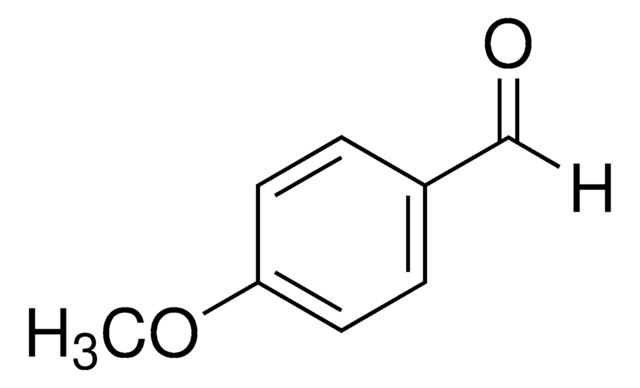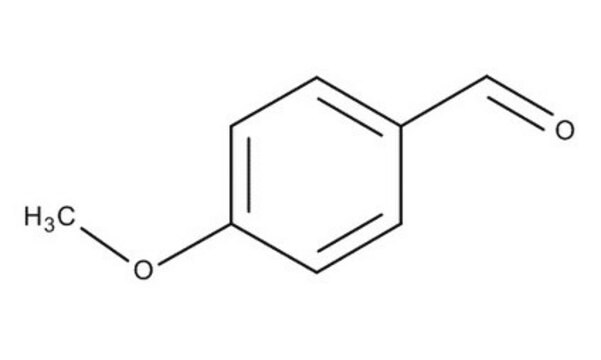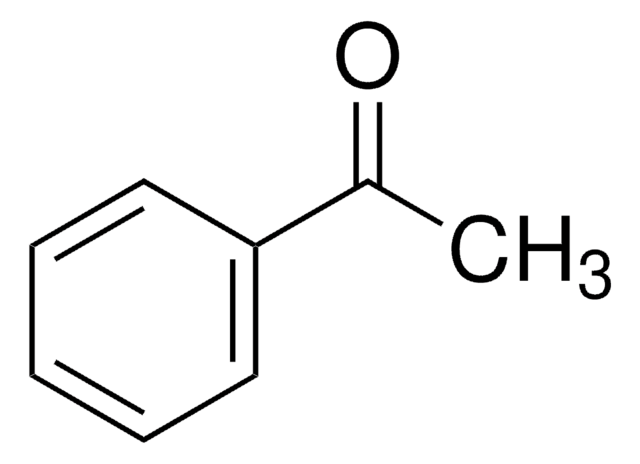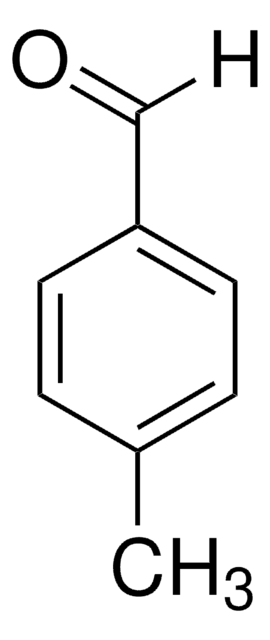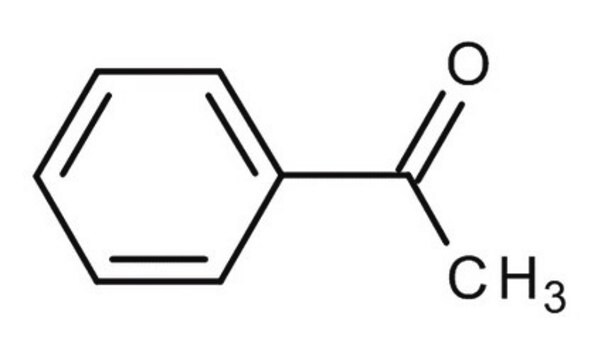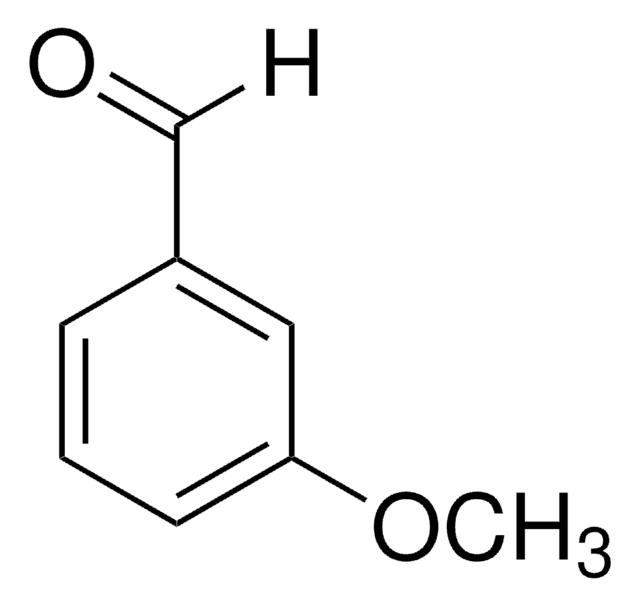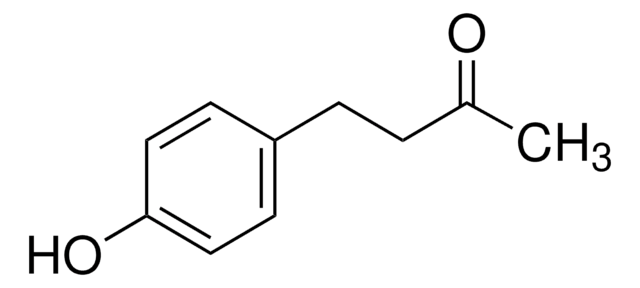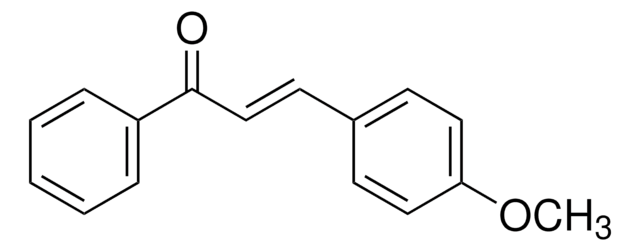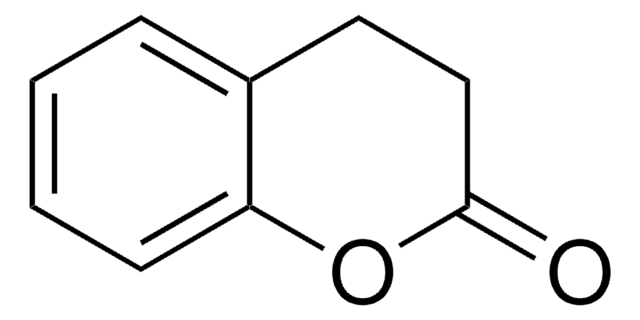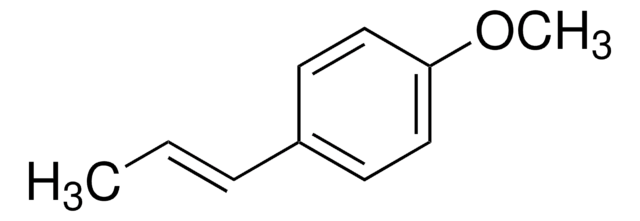W267007
p-Anisaldehyde
≥97.5%, FCC, FG
Synonim(y):
4-Methoxybenzaldehyde, Aubépine
About This Item
Polecane produkty
pochodzenie biologiczne
synthetic
klasa czystości
FG
Fragrance grade
Halal
Kosher
agency
follows IFRA guidelines
meets purity specifications of JECFA
zgodność regionalna
EU Regulation 1223/2009
EU Regulation 1334/2008 & 872/2012
FCC
FDA 21 CFR 172.515
gęstość pary
4.7 (vs air)
Próba
≥97.5%
Postać
liquid
skład
contains IFRA restricted p-Anisaldehyde
współczynnik refrakcji
n20/D 1.573 (lit.)
tw
248 °C (lit.)
mp
−1 °C (lit.)
gęstość
1.119 g/mL at 25 °C (lit.)
Zastosowanie
flavors and fragrances
Dokumentacja
see Safety & Documentation for available documents
alergen pokarmowy
no known allergens
alergen zapachowy
no known allergens
Organoleptyczne
anise; cherry; creamy; floral; balsamic; sweet; vanilla
ciąg SMILES
[H]C(=O)c1ccc(OC)cc1
InChI
1S/C8H8O2/c1-10-8-4-2-7(6-9)3-5-8/h2-6H,1H3
Klucz InChI
ZRSNZINYAWTAHE-UHFFFAOYSA-N
informacje o genach
human ... CYP1A2(1544)
Szukasz podobnych produktów? Odwiedź Przewodnik dotyczący porównywania produktów
Powiązane kategorie
Zastosowanie
- Aryl-alcohol oxidase involved in lignin degradation: a mechanistic study based on steady and pre-steady state kinetics and primary and solvent isotope effects with two alcohol substrates.: The study focuses on the mechanistic understanding of aryl-alcohol oxidase in lignin degradation, utilizing p-Anisaldehyde as a model substrate to investigate enzyme kinetics and isotope effects. (Ferreira et al., 2009).
Działania biochem./fizjol.
Inne uwagi
Hasło ostrzegawcze
Warning
Zwroty wskazujące rodzaj zagrożenia
Zwroty wskazujące środki ostrożności
Klasyfikacja zagrożeń
Aquatic Chronic 3 - Repr. 2
Kod klasy składowania
10 - Combustible liquids
Klasa zagrożenia wodnego (WGK)
WGK 1
Temperatura zapłonu (°F)
240.8 °F - closed cup
Temperatura zapłonu (°C)
116 °C - closed cup
Certyfikaty analizy (CoA)
Poszukaj Certyfikaty analizy (CoA), wpisując numer partii/serii produktów. Numery serii i partii można znaleźć na etykiecie produktu po słowach „seria” lub „partia”.
Masz już ten produkt?
Dokumenty związane z niedawno zakupionymi produktami zostały zamieszczone w Bibliotece dokumentów.
Klienci oglądali również te produkty
Nasz zespół naukowców ma doświadczenie we wszystkich obszarach badań, w tym w naukach przyrodniczych, materiałoznawstwie, syntezie chemicznej, chromatografii, analityce i wielu innych dziedzinach.
Skontaktuj się z zespołem ds. pomocy technicznej